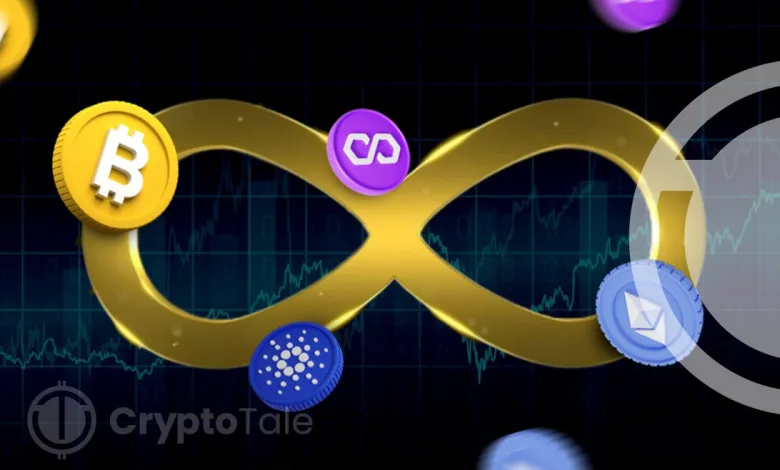What Are Perpetual Future Contracts in Cryptocurrency?

A perpetual futures contract, or perpetual swap, is a financial derivative that enables traders to speculate on the price of an asset. In recent years, there has been a significant increase in the popularity of perpetual futures in the world of crypto derivatives. Here, you will get to know what are perpetual futures contracts and their features.
What Are Perpetual Futures?
Perpetual futures contracts are a type of derivative contracts that allow traders to speculate on the future price of an underlying asset. This means perpetual contracts allow traders to speculate on cryptocurrencies like Bitcoin without the need to possess the actual assets. Unlike traditional futures contracts with set expiration dates, Perpetual contracts can be held indefinitely since they have no expiry date.
In 1992, Robert Shiller proposed the concept of perpetual futures, a derivative contract involving cash settlements. Subsequently, perpetual contracts were used in commodity trading and gained further momentum with the rise of cryptocurrencies. Since these contracts are settled in cash and require no physical asset delivery, they provide traders with increased leverage opportunities.
Perpetual futures are contracts between two long and short counterparties. When the underlying asset’s market price surpasses the contract’s price, the short side will reward the long side. Conversely, when the underlying asset’s market price falls below the contract price, the long side will reward the short side.
What Are the Features of Perpetual Futures?
Perpetual Futures contracts are becoming popular because of their distinctive features, which include
1. Funding Rate: The funding rate is a mechanism used in perpetual futures contracts to facilitate alignment between the contract price and the market price of the underlying asset, like cryptocurrencies. It represents the payment exchanged between long and short positions to bridge the gap between the contract price and the asset’s market price. The rate is determined by the difference between the perpetual contract price and the underlying assets market price.
2. No Expiration Date: One of the biggest features of perpetual future contracts is the lack of an expiration date. They use an hourly auto-rollover feature that allows traders to keep their positions open indefinitely without the need to renew or roll over the contracts.
3. Leverage: Perpetual contracts allow traders to use leverage to increase their position. For instance, using 5X leverage, you can increase your position from $1,000 to $5,000. While it may appear simple to generate profits, traders can lose their positions instantly.
4. Margin Requirements: Funds that a trader deposits to open a leverage position are called the initial margin. The minimum amount of money required to maintain the open position is called the maintenance margin. If the balance falls below the maintenance margin level, the exchange will liquidate the position to recover any potential loss.
5. Liquidation: This process happens when a trader’s equity crosses the maintenance margin level and needs to be closed to avoid a negative balance in the account. Since the leverage positions are highly volatile, traders’ accounts can easily become negative and often need to be liquidated. In the market, high leverage can easily force a trader to liquidation. While a low-leverage means there will be no liquidation when minor corrections occur.
How Does Perpetual Future Contracts Work?
Perpetual futures contracts use the funding rate mechanism. The funding occurs every 8 hours, during which traders either pay or receive funding. The calculation is based on the relationship between the contract price and the underlying asset’s market price, along with the long and short positions.
If the contract price exceeds the asset’s market price, the funding rate is positive, indicating the contract is trading at a premium (long holders pay short position holders). Contrarily, when the contract price is below the asset’s market price, the funding rate is negative, signaling the contract is trading at a discount (short holders pay long positions holders).
BitMEX, a crypto exchange, introduced a perpetual Bitcoin contract (XBTUSD) allowing traders to leverage their positions against the US spot Bitcoin price. When the value of Bitcoin exceeds the contract price, long-position traders are incentivized to buy contracts by receiving compensation from short-position traders. This helps align the contract price with the actual Bitcoin price.
On the other hand, when the price of Bitcoin falls below the contract price, long-position traders compensate short-position traders, motivating them to sell the contract. This process helps bring the contract price closer to the actual BTC price.
How Are Perpetual Futures Different From Traditional Futures?
Although both types of future contracts allow traders to speculate the underlying asset’s price movements, there are certain differences between them that traders should be aware of.
Traditional Futures contracts have expiration dates for settling their open positions. The frequency of contract expiration can be weekly, monthly, quarterly, or other schedules. While perpetual future contracts have no expiration date, they have a funding rate that occurs periodically to maintain the contract price close to the spot price.
Nowadays, traditional contracts refer to commodities like gold, wheat, or oil. When the futures contract for these commodities expires, they usually involve the delivery of these commodities physically or through cash settlement. Perpetual futures contracts are mostly seen in cryptocurrencies like Bitcoin and Ethereum
Traditional futures contracts are regulated by the Commodity Futures Trading Commission (CFTC). In contrast, perpetual futures contracts mostly deal with cryptocurrency and operate outside the regulatory framework. Furthermore, the risks associated with trading perpetual futures contracts are high, and traders should do their due diligence before investing in this market.
Guide To Trade Perpetual Futures Contracts
The initial step for trading futures contracts involves opening an account with a cryptocurrency exchange that offers perpetual contracts. After setting up the account, it’s crucial to sufficiently fund it to cover both the initial margin and maintenance margin requirements.
Once funded, traders can select the desired contract and establish a position by either selling or buying the contract. Prior to investing in perpetual futures contracts, a thorough understanding of the contracts and their associated risks is essential. Perpetual contracts are nothing more than a tool to speculate on an underlying asset’s price movements.
What Are the Strategies for Trading Perpetual Future Contracts?
There are lots of strategies available for trading perpetual futures contracts. The trader’s goal and recommendations from a professional broker can help determine the strategy.
1. Speculation: Speculation is a high-risk, high-reward strategy where the potential for obtaining large profits equals the risk of losing the entire capital. Traders speculate on the future price of an underlying asset and take long positions (price increase) or short positions (price decrease) on the perpetual futures contracts.
For instance, if traders anticipate an upward movement in the price of Bitcoin, they may assume a long position in the futures contract, thereby profiting as the price rises. Conversely, if traders anticipate a decline in price, they can take short positions in futures contracts and profit from the price decreases.
2. Arbitrage: It is an investment strategy that exploits the price difference between perpetual futures contracts and the spot market to make profits. Traders using arbitrage can buy and sell assets in the same market at different periods or choose to buy and sell assets at different markets simultaneously to profit from the price discrepancies.
3. Hedging: It is a strategy where traders leverage existing positions in the perpetual futures contracts to reduce losses when the market trend changes. For example, a trader holding Ethereum might sell perpetual futures contracts to protect his assets from a potential price drop.
4. Trend Trading: It is a strategy where traders identify the market trend using technical analysis and take positions with respect to the trend. In this scenario, traders enter the market by following the direction of the trend and exit the market when the trend reverses.
Advantages of Perpetual Future Contracts:
- They have no expiration date, and your position will remain open indefinitely as long as the margin requirements are met.
- Perpetual futures contracts mostly use cash settlements and offer the option of leveraging positions owing to their high liquidity.
- These contracts offer hedging options, effectively reducing the risk for a trader when the market moves against their orders.
Disadvantages of Perpetual Future Contracts:
- While perpetual contracts have the ability to make huge profits, there is also the risk of losing a large portion of the assets.
- Counterparty risks are high because perpetual contracts are not regulated, and the platform could default on payment or go bankrupt.
- Risks involved in perpetual futures contracts are high and are not ideal for new traders.
Conclusion:
Perpetual contracts have become popular among traders due to their ability to open positions without an expiration date. Additionally, traders can gain huge profits more easily when compared with traditional futures contracts, despite the associated risks being high. To mitigate the risks and earn a profit, traders need a thorough understanding of the workings of perpetual futures contracts.




